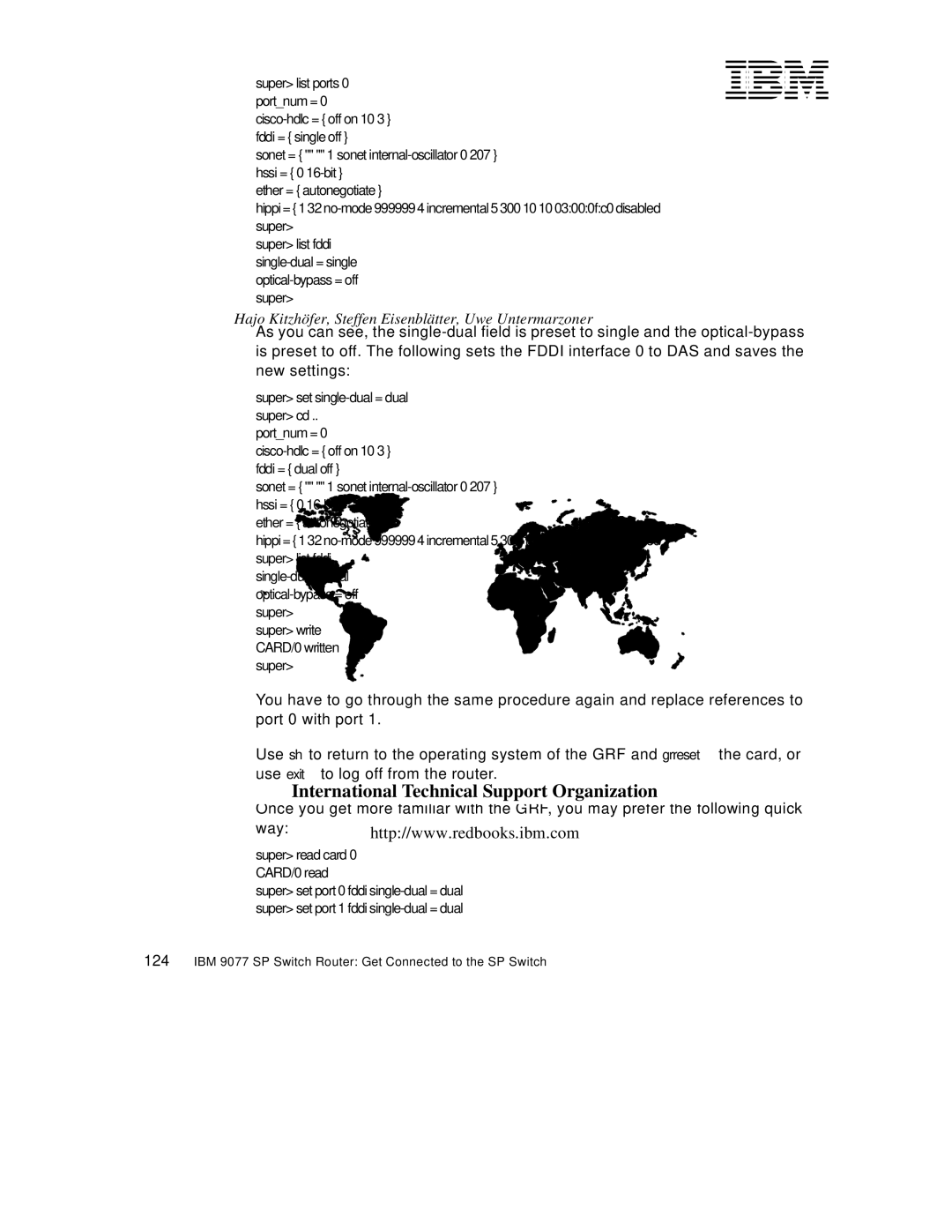super> list ports 0 port_num = 0
cisco-hdlc = { off on 10 3 } fddi = { single off }
sonet = { "" "" 1 sonet internal-oscillator 0 207 } hssi = { 0 16-bit }
ether = { autonegotiate }
hippi = { 1 32 no-mode 999999 4 incremental 5 300 10 10 03:00:0f:c0 disabled super>
super> list fddi single-dual = single optical-bypass = off super>
As you can see, the single-dual field is preset to single and the optical-bypass is preset to off. The following sets the FDDI interface 0 to DAS and saves the new settings:
super> set single-dual = dual super> cd ..
port_num = 0
cisco-hdlc = { off on 10 3 } fddi = { dual off }
sonet = { "" "" 1 sonet internal-oscillator 0 207 } hssi = { 0 16-bit }
ether = { autonegotiate }
hippi = { 1 32 no-mode 999999 4 incremental 5 300 10 10 03:00:0f:c0 disabled super> list fddi
single-dual = dual optical-bypass = off super>
super> write CARD/0 written super>
You have to go through the same procedure again and replace references to port 0 with port 1.
Use sh to return to the operating system of the GRF and grreset the card, or use exit to log off from the router.
Once you get more familiar with the GRF, you may prefer the following quick way:
super> read card 0
CARD/0 read
super> set port 0 fddi single-dual = dual
super> set port 1 fddi single-dual = dual
124IBM 9077 SP Switch Router: Get Connected to the SP Switch
